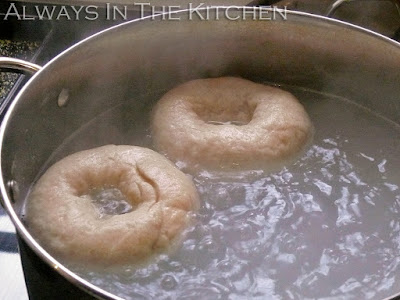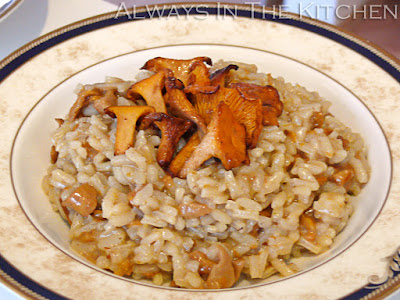
Despite the deliciousness of roasted asparagus, this post is actually about the lovely slices of pork tenderloin peeking out from behind the wall of green.
Technically, this should be Porc à la Normande, in the original French, or Pork Normandy, in English. Somewhere along the line, however, I started calling it Porc Normandie, and that's how it remains in our household. A linguistic abomination, but a delicious and somewhat unusual plat principal. Either way, it's pork tenderloin that has been simmered in wine and served in an apple cream sauce.
Because apples (and the products thereof) are an extremely important crop in Normandy, there are a lot of potential variations on the apple theme in this dish. The apples in the sauce are non-negotiable, but the braising liquid could be wine or apple cider, and many versions add Calvados as a finishing touch. There's a lot of room to customize for your personal preference.
There are two points of interest in the following recipe that fly in the face of most of our assumptions about European food: First, there is no onion or garlic in any form. Secondly, there is no added salt (although I do use salted butter for browning). Of course, you can either or both of those things to the side dishes - mashed potatoes certainly like a bit of salt and usually enjoy a bit of garlic or chive, too, and I always sprinkle a little salt on my roasted asparagus. But the main dish itself does not call for these things as an ingredient (although there are other versions of Porc à la Normade that do - it isn't necessarily a hallmark of the dish). In all the times that I have made this, I have never found it wanting for either.
This recipe has been minimally adapted from French Cooking Made Easy by the Australian Women's Weekly.
Feel free to double the quantities.
Porc Normandie
Serves 4
1 large pork tenderloin (about 700 grams)
1 tablespoon butter
1 tablespoon canola oil
1 cup dry white wine (or dry apple cider)
1 apple
1 sprig of fresh rosemary, minced
1 tablespoon red currant jelly
1/2 cup cream
1 teaspoon cornstarch
Juice of half a lemon
Select an apple that holds its shape, unless you want the pieces to melt during cooking. I use a granny smith, but that might be a little too tart for some tastes. A Gala should also work nicely. Peel and core the apple, and cut it into thin slices. Place the apple slices in a small saucepan with the wine (or apple cider) and minced rosemary. Bring to a simmer, cover, reduce the heat and let cook for ten minutes. Strain, reserving both the apple slices and the liquid separately.
Lay the pork tenderloin out on the cutting board, and trim away any excess fat or silverskin (the shiny coating of connective tissue that often forms a partial sleeve on the outside of the thick end of the tenderloin). Here is a resource for how to remove the silverskin, if you're not sure.
Cut the tenderloin into two or three pieces, so that it can fit in your skillet.
In a medium or large skillet, heat the butter and the canola oil over medium-high heat until a drop of water will dance on the surface of the pan. Place the tenderloin halves in the pan, and lightly brown on all sides. Add the reserved liquid from simmering the apples, bring to a simmer, cover, and allow to cook for ten minutes. The pork will still be slightly pink in the centre, but that's fine. Remove the pork to a plate and set aside.
Increase the temperature to a brisk simmer, stir the red currant jelly into the simmering liquid, whisking or stirring until it is fully dissolved. Add the cream, and stir through. Allow the sauce to bubble while you combine the lemon juice and cornstarch in a small bowl until smooth. Stir the cornstarch/lemon mixture into the sauce, and continue to cook and stir until it thickens into a gravy.
Pour the juices that have collected on the plate under the resting pork into the sauce, and stir through. Reduce the heat to low, and leave uncovered. Slice the pork into thick medallions, and lay it into the sauce. Spoon some of the sauce over the pork, and then add the apples back into the sauce. Allow the pork about five minutes to finish cooking in the sauce, periodically spooning more sauce over the slices.

Serve with something that can take advantage of the beautiful apple-infused sauce - such as the rosemary mashed potatoes shown above, or buttered egg noodles, and a seasonal vegetable of your choice. And maybe a dry Sauterne, if you used wine, or more cider, as you like.
If you have leftovers, they reheat quite beautifully. Simply remove the pork slices, scrape the solidified sauce (with apples) into a small skillet and reheat until bubbling. Turn the heat to the lowest setting, slide the pork slices into the hot sauce, and cover, giving it five or ten minutes to heat through, stirring or turning the pork pieces over mid-way.






































